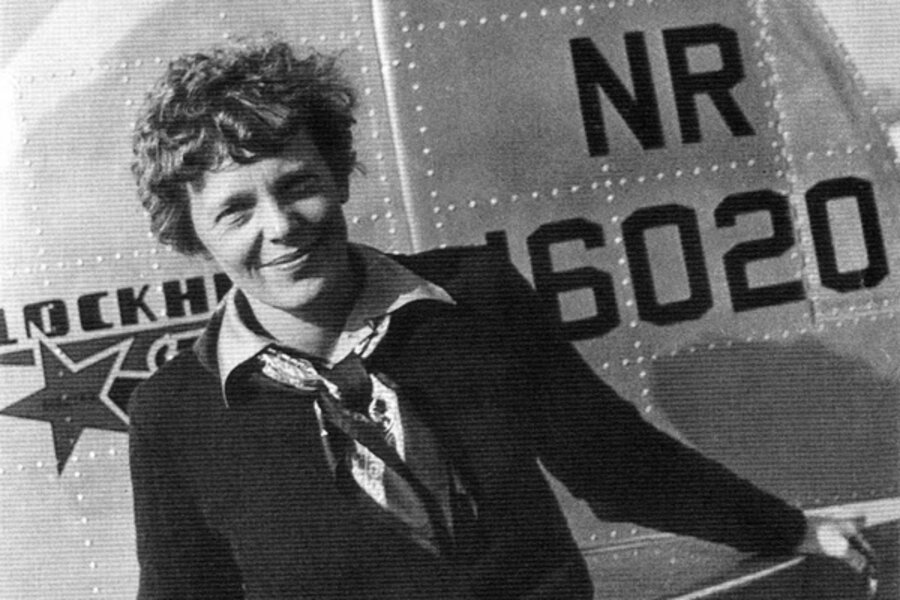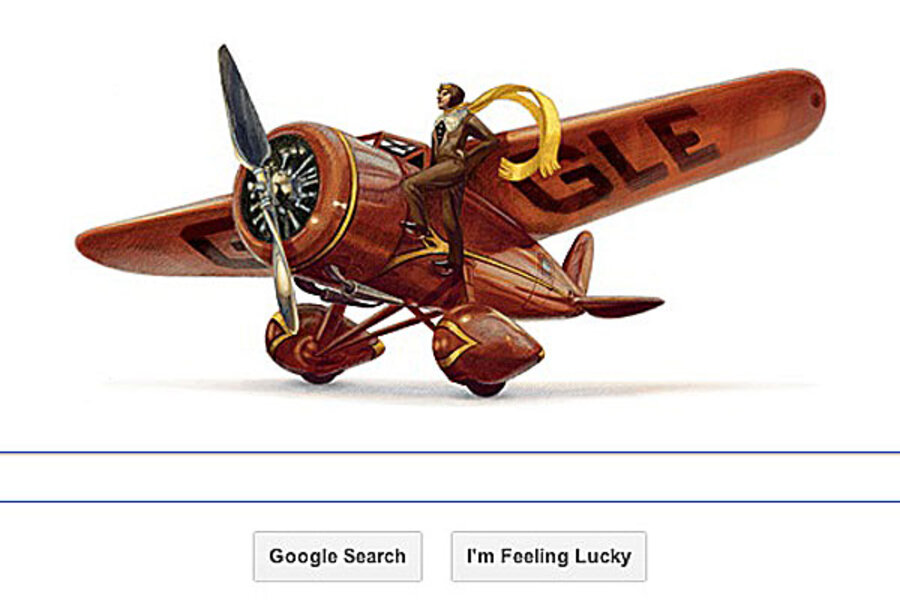Amelia Earhart: Pilot and feminist
Loading...
Amelia Earhart, the famed aviatrix, is best remembered for the mystery surrounding her 1937 disappearance – and by the way, Google is honoring her today with a birthday doodle. But Earhart’s views about gender equality are arguably as noteworthy as her flight records.
Earhart started challenging gender stereotypes early in her life. According to ameliaearhart.com, the official website produced by her family, Earhart, who grew up in Atchison, Kans., was a tomboy who loved climbing trees, hunting rats with a .22 rifle, and “belly-slamming” her sled to start it downhill.
As a young girl, she kept a scrapbook of newspaper clippings about great women of the time in fields of all sorts; film, law, advertising, management, and mechanical engineering.
"Even as a child, as a little girl, she said she should be allowed to do anything a boy would be allowed to do," says Louise Foudray, the caretaker and historian for the Amelia Earhart museum in Atchison.
Her parents’ turbulent marriage is also said to have contributed to her feminist mindset. Her mother was raised in a wealthy family, and her father struggled under the pressure to provide his wife with the sort of lifestyle she was used to. The couple eventually divorced.
Earhart swore that someday she would be an independent woman, and would never rely on a man for financial support. She worked her way to financial independence as a nurse’s aide in a military hospital in Canada during WWI, and later as a social worker in Boston.
Earhart earned enough money for flying lessons and paid for her first plane, a yellow two-seat biplane she named “Canary.” She set her first record in Canary, becoming the first woman to rise to an altitude of 14,000 feet.
Earhart joined the ranks of endurance pilots like Charles Lindbergh, breaking aviation records throughout the 20s and 30s. In 1932 she became the first woman, and only the second person after Lindbergh, to fly solo across the Atlantic.
The solo flight across the Atlantic proved, she said, that men and women were equal in “jobs requiring intelligence, coordination, speed, coolness, and willpower.” Earhart not only seemed determined to make it known that women were as capable as men, but to challenge other women to push themselves, and the boundaries of what they could accomplish.
“Now and then women should do for themselves what men have already done — occasionally what men have not done — thereby establishing themselves as persons, and perhaps encouraging other women toward greater independence of thought and action,” she said.
But earning the respect of male pilots and the admiration of a nation wasn’t her only goal; Earhart sought equality in every aspect of her life. In 1931 when she married her publicist and friend, George Putnam, she called the union a “partnership,” with “dual control.”
Earhart used her notoriety to rally support for other female pilots who faced gender discrimination. When Helen Richey, the first female commercial airline pilot, quit her job at Central Air Lines in 1935 after just 10 months because the airline suggested she wouldn't be physically strong enough to fly in bad weather, Earhart organized a protest in Washington DC.
“Certainly Miss Earhart herself has demonstrated the fallacy of that old idea of women’s physical inferiority which we meet on a thousand fronts every day," said Alice Paul in response to the Richey situation. Paul was a well-known suffragist and activist who picketed the White House during the Woodrow Wilson administration.
Later, in 1941, Richey became the first woman flight instructor licensed by the newly formed US Civil Aeronautics Authority.
Earhart also helped found the Ninety-Nines, a group of female pilots; she was the organization's first president. Today, the Ninety-Nines are an international organization with thousands of licensed members. By breaking records Earhart and other women in aviation were proving they were equal to men in skill and physical capability.
"She understood that this represented an opportunity to promote women in aviation and also women to lead independent lives, professional lives outside the home," said Frank Goodyear in an interview with WTOP 103.5 FM, a news radio station in Washington. Goodyear is the associate curator of photographs at the National Portrait Gallery, which is now showing a special exhibit celebrating Earhart's career and legacy, with a particular focus on her contribution as a feminist.
After setting many records, becoming the first person to fly solo across the Pacific and the first person to fly solo from Mexico City to Newark, Earhart, nearing her 40th birthday took on her greatest challenge yet, a trip around the world.
Knowing how dangerous the flight would be, she left a letter for her husband in case she didn’t return, writing, “Please know I am quite aware of the hazards. I want to do it because I want to do it. Women must try to do things as men have tried. When they fail, their failure must be but a challenge to others.”
It wasn’t until 1964 that Geraldine “Jerrie” Mock, the manager of Columbus Airport in Ohio, became the first woman to successfully fly around the world. But between Earhart’s disappearance in 1937 and Mock’s flight, many women in aviation took on Earhart’s challenge and legacy, becoming air traffic controllers, piloting military aircraft, breaking the sound barrier, and even going into space.
Earhart will always be best remembered for her mysterious disappearance, but her legacy as a feminist may be equally important to women and girls who might still struggle with questions of independence, pay equity, and equal rights in society.
"She was very strong in advocating that women should break out of their shells and do more," says Foudray, the caretaker at the Earhart museum. "She said the world was not using aviation to its fullest potential. She wanted to show what was possible, and that's why she became a historic icon."






